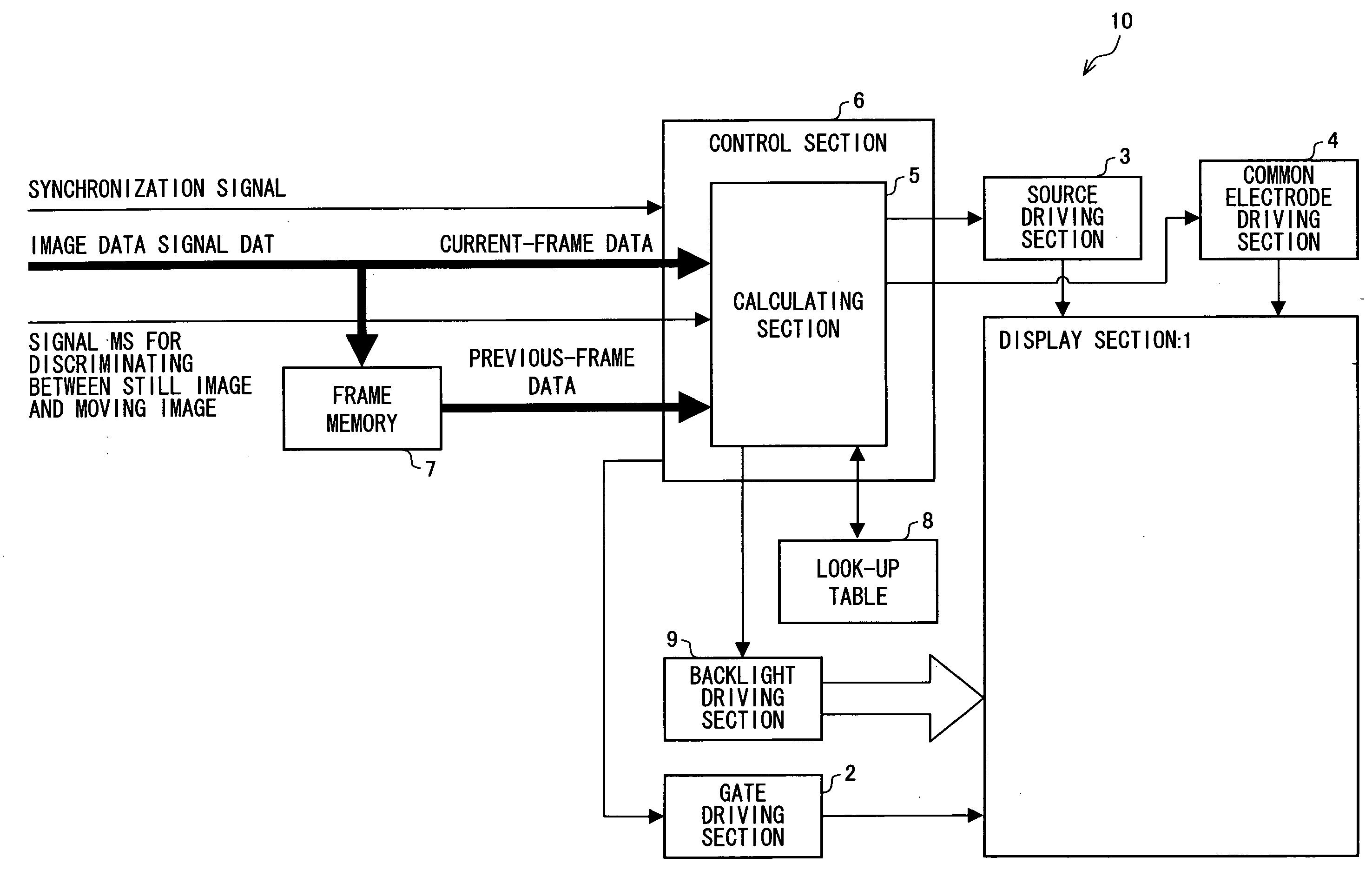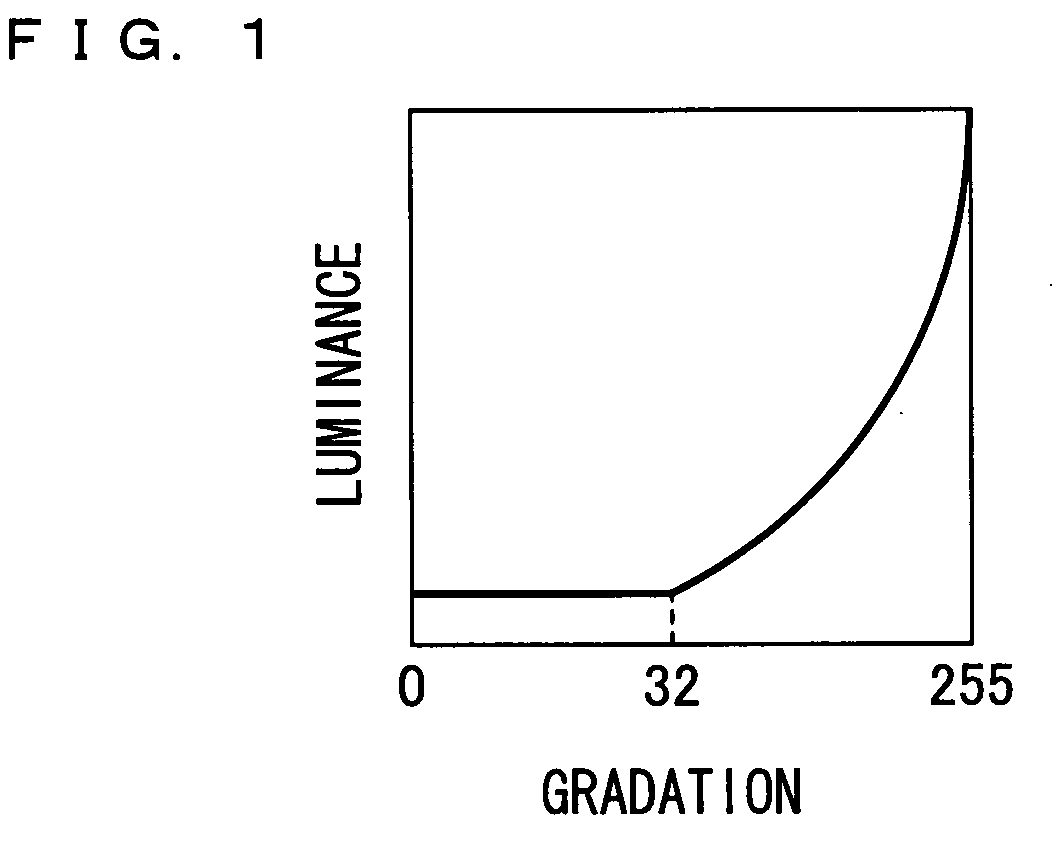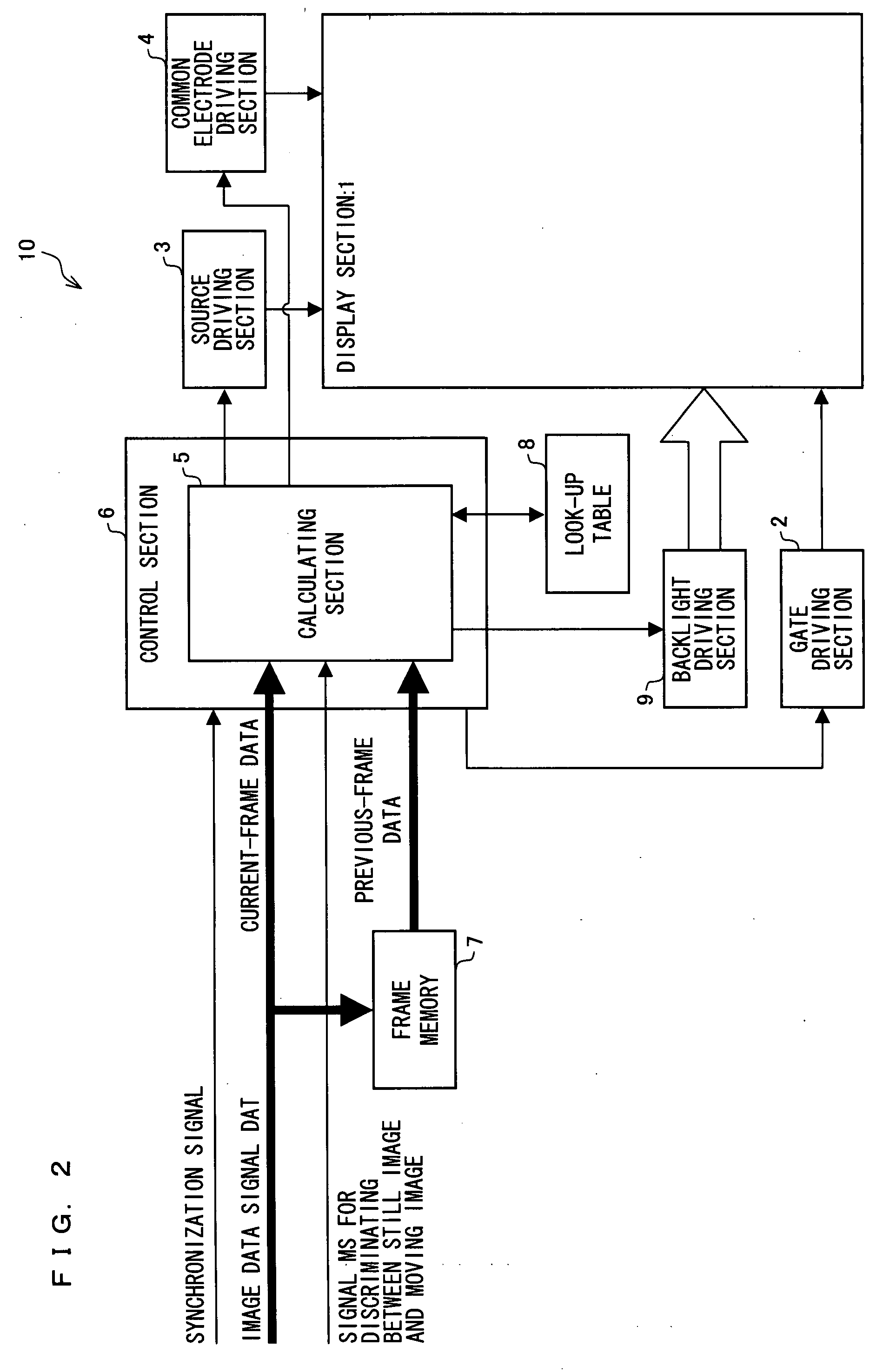Method for driving liquid crystal display apparatus
a liquid crystal display and display technology, applied in the field of methods for driving liquid crystal display apparatuses, can solve the problems of long completion time, low response speed of liquid crystal display apparatus, etc., and achieve the effect of improving response speed, easy to discriminate, and without impairing characteristics
- Summary
- Abstract
- Description
- Claims
- Application Information
AI Technical Summary
Benefits of technology
Problems solved by technology
Method used
Image
Examples
Embodiment Construction
[0039]An embodiment of the present invention will be described below with reference to FIGS. 1 to 8.
[0040]For example, as shown in FIG. 2, an active matrix liquid crystal display apparatus 10 of the present embodiment includes: a display section 1, a gate driving section 2, a source driving section 3, a common electrode driving section 4, a control section in which a calculating section 5 is provided, a frame memory 7, a look-up table 8, and a backlight driving section 9.
[0041]Although not fully shown in the figure, the display section 1 includes e scanning signal lines that are parallel to one another, f data signal lines that are parallel to one another, and pixels arrayed in a matrix manner. Each of the pixels is formed in a region enclosed by two adjacent scanning signal lines and two adjacent data signal lines.
[0042]The gate driving section 2 sequentially generates, in accordance with a gate clock signal and a gate start pulse each outputted from the control section 6, scanning...
PUM
 Login to View More
Login to View More Abstract
Description
Claims
Application Information
 Login to View More
Login to View More - R&D
- Intellectual Property
- Life Sciences
- Materials
- Tech Scout
- Unparalleled Data Quality
- Higher Quality Content
- 60% Fewer Hallucinations
Browse by: Latest US Patents, China's latest patents, Technical Efficacy Thesaurus, Application Domain, Technology Topic, Popular Technical Reports.
© 2025 PatSnap. All rights reserved.Legal|Privacy policy|Modern Slavery Act Transparency Statement|Sitemap|About US| Contact US: help@patsnap.com



